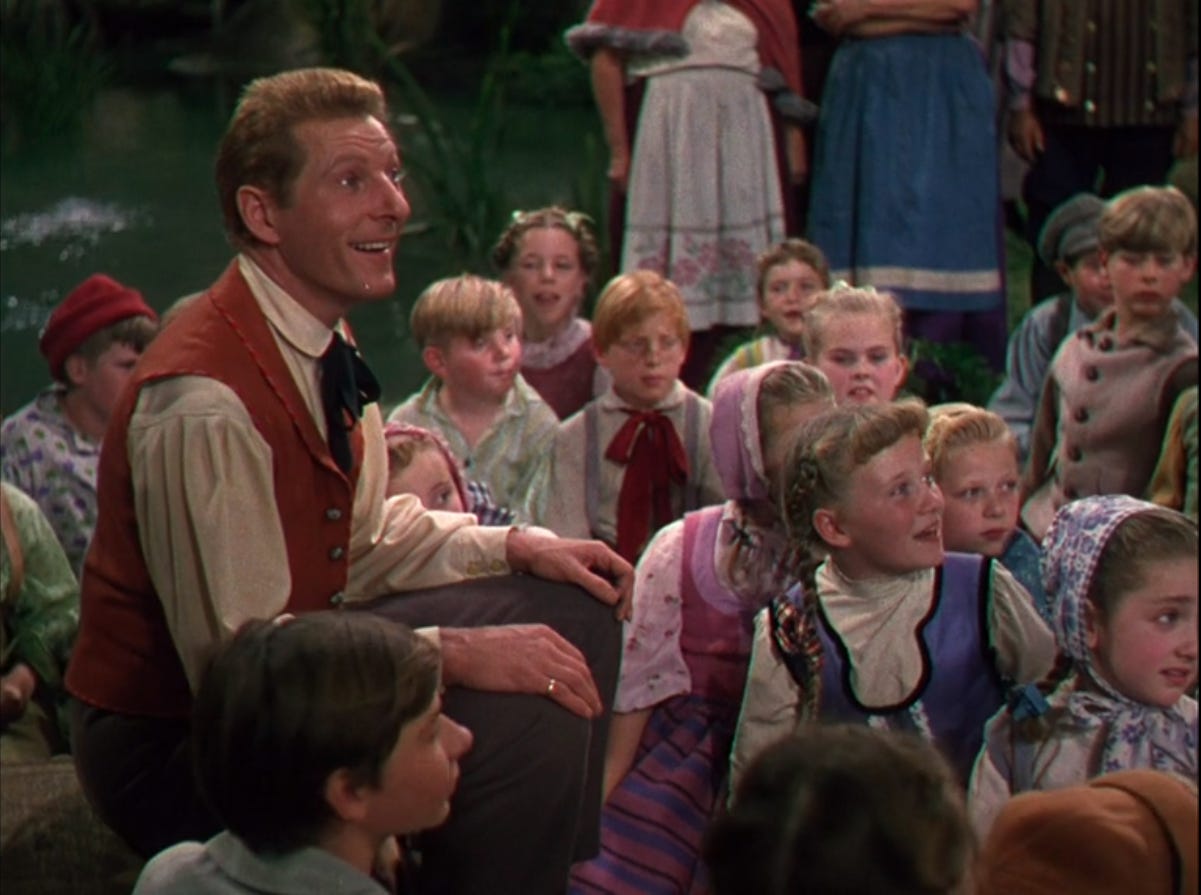Hans Christian Andersen (1952)
Like David O. Selznik after Gone With the Wind, producer Samuel Goldwyn tried his hardest to recapture the success of his most acclaimed film, 1946’s The Best Years Of Our Lives, and he never quite got there, much as he would have liked to. However, his 1952 movie, Hans Christian Andersen, captured something better: Magic.
The movie isn’t a biopic, not in the slightest, although it includes a few nods to the real Andersen. It begins in a Hollywood version of Andersen’s birthplace of Odense in Denmark, where the schoolchildren forget to go to school because they’d rather listen to humble cobbler Andersen’s (Danny Kaye) latest story.
Odense’s villagers, especially the local schoolmaster, are so fed up that they want Andersen to leave town, so Andersen’s apprentice, Peter (Joseph Walsh) talks him into going to Copenhagen, where Andersen will find a beautiful ballerina, unrequited love, and new places to tell stories.
About ninety-five percent of the movie didn’t happen. Unrequited love was unfortunately Andersen’s lot in life, but he was never a cobbler and was able to obtain an education and financial support from a wealthy benefactor. The film is a showcase for Andersen’s stories, mostly told by Danny Kaye and the whole movie is presented in a softly but brightly saturated color palette. Nothing is really ugly because it is all a fantasy; even its dark moments are washed in color. It’s a beautiful film to look at.
The songs are earworms in the best way. They may seem charmingly old-fashioned to some, or maybe just old-fashioned, but they’re entertaining and singable. What really sells them are Danny Kaye’s confidential tone and whimsical innocence; an impressive feat, seeing as Andersen’s audience in the film is most often that toughest of crowds—little children.
Andersen’s screenplay was written by Moss Hart, its music was written by Frank Loesser, and what we see in the film is one of dozens of versions of Andersen’s life that had been floating around in Goldwyn’s creative cache since the nineteen-thirties. According to TCM, Paramount execs liked the version we see in the movie, so that was the one Goldwyn settled on.
Making the film wasn’t easy, as some of the actors did a lot of complaining, but Goldwyn had a much larger problem when all was said and done: The Danes haaaated the way Andersen was portrayed. Hans Christian Andersen is a national hero in Denmark, and a lot of people were incensed that his life had been reduced to a fairy tale.
Danny Kaye was sent on a peacemaking mission to Copenhagen, where he laid flowers at Andersen’s statue before giving the statue a big hug. The Danes who surrounded the statue loved it so much that Kaye had to be carried out by the police. After that, the Danes were fine with the film, which would gross six million at the box office and garner numerous award nominations but no wins.
It might not be true, but Hans Christian Andersen is a graceful fairy tale that’s fun to escape into. Goldwyn and everyone else did good.
Hans Christian Andersen is available on Amazon Prime. Not rated.
My grade: A
Principal Cast: Danny Kaye, Joseph Walsh, Farley Granger, Zizi Jeanmaire, Roland Petit, John Qualen, Robert Malcolm
Directed by Charles Vidor
Screenplay by Moss Hart and Ben Hecht (uncredited), based on a story by Miles Connolly
Music by Frank Loesser




